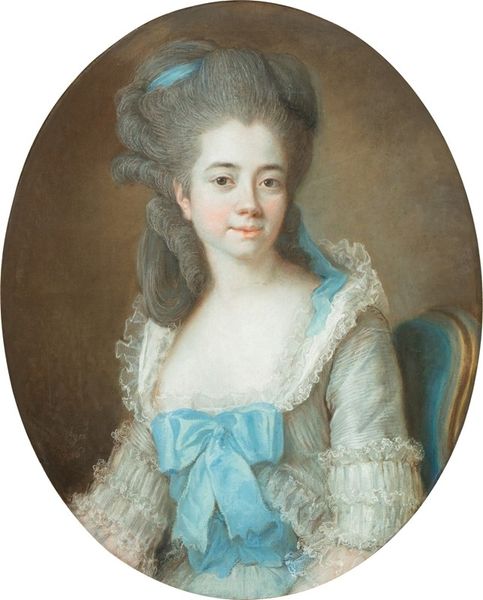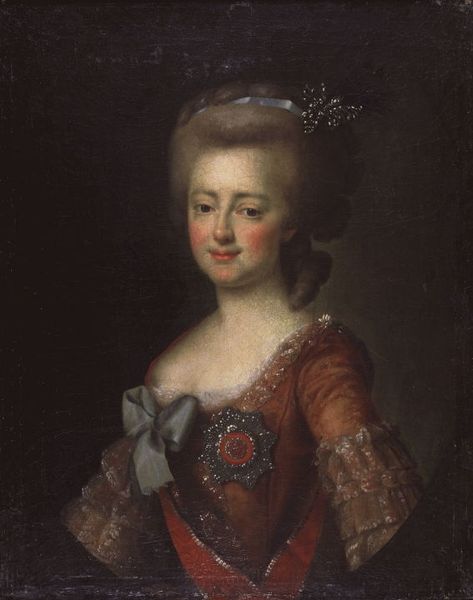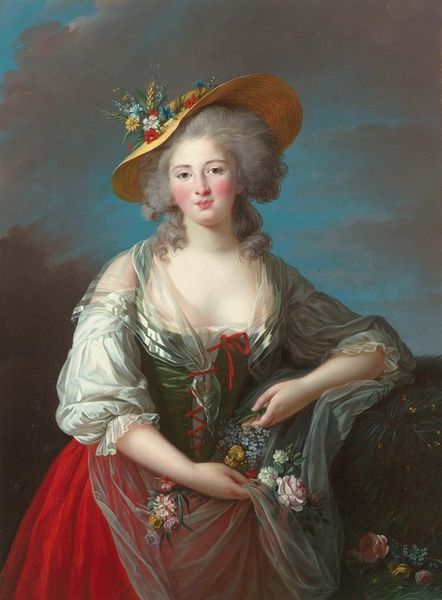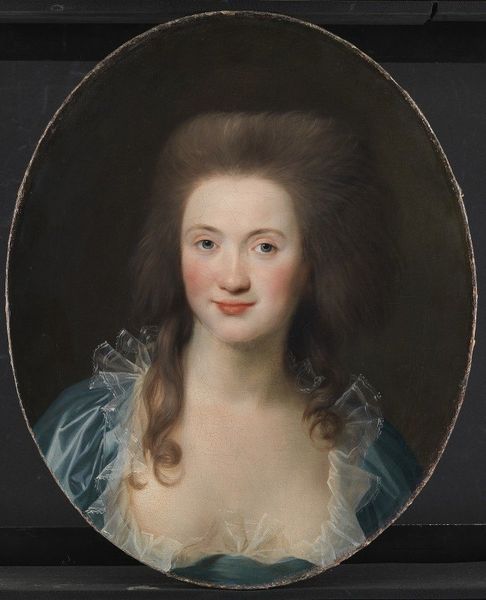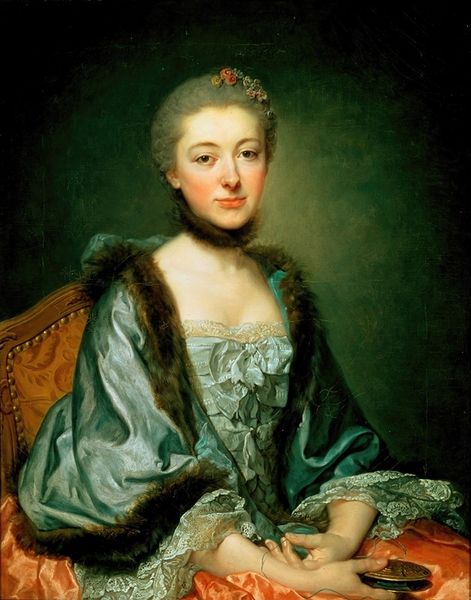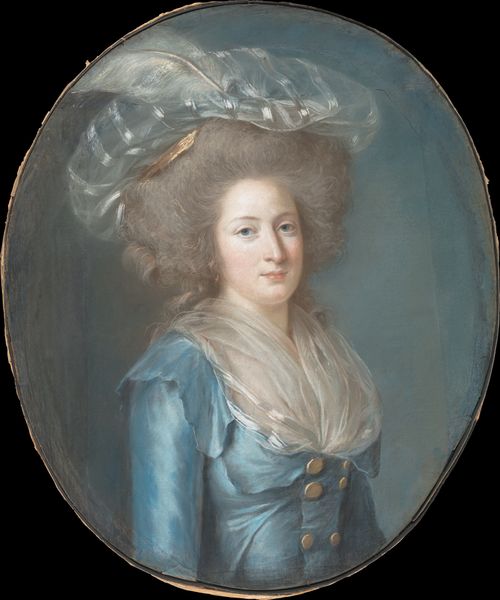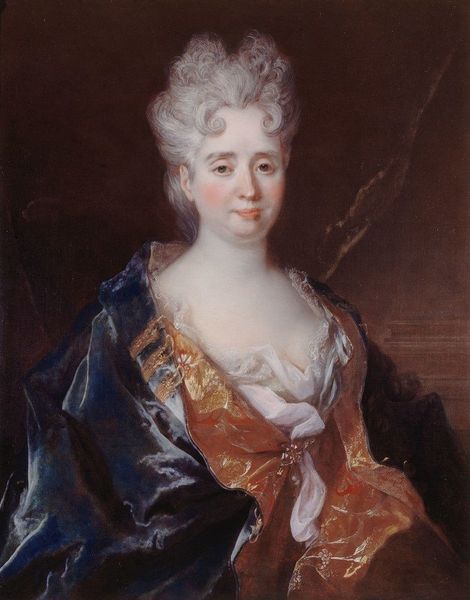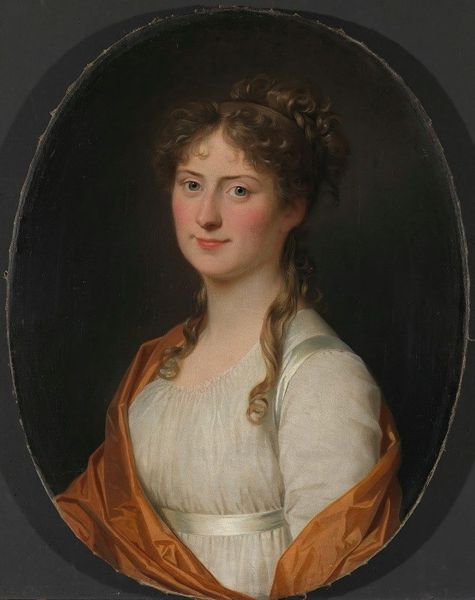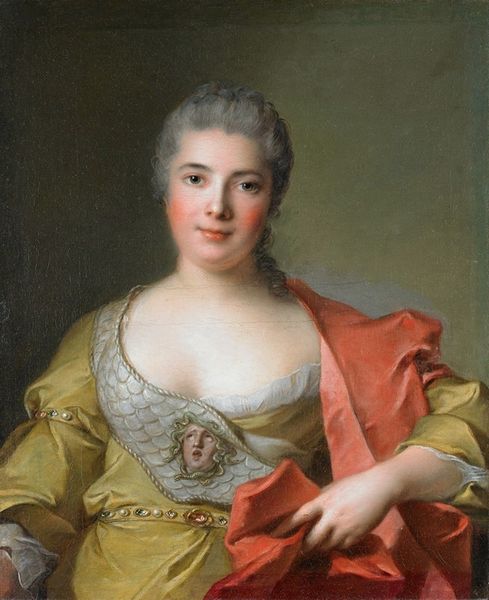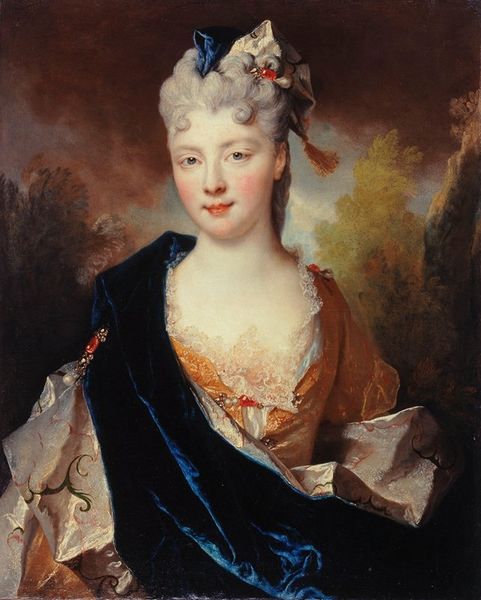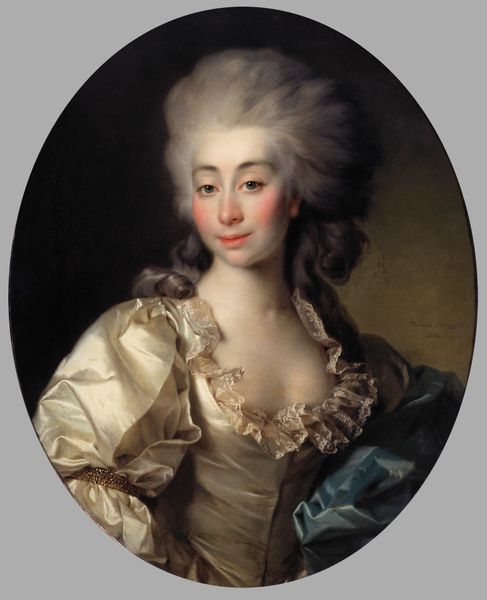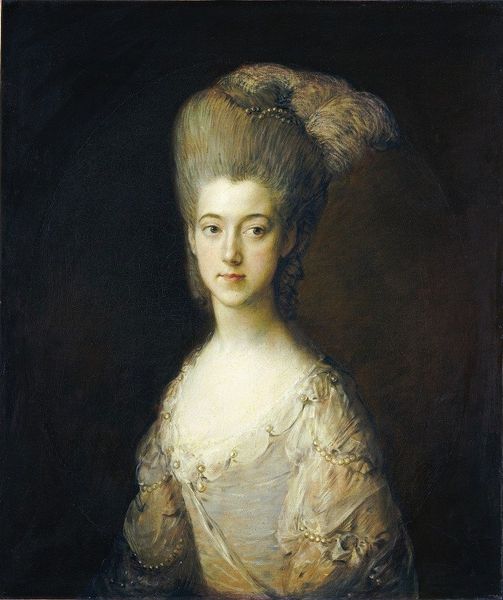
painting, oil-paint
#
portrait
#
figurative
#
character portrait
#
baroque
#
portrait image
#
painting
#
oil-paint
#
portrait reference
#
portrait head and shoulder
#
animal portrait
#
animal drawing portrait
#
facial portrait
#
portrait art
#
fine art portrait
#
rococo
#
celebrity portrait
Copyright: Public Domain: Artvee
Editor: So, this is an oil painting called “Female Portrait” by Nicolas de Largillière. I find the sitter's expression really captivating. She seems poised, but also a little melancholic. What's your take on it? Curator: Well, I think it's important to consider portraits like this within the social and political context of the time. Largillière was a highly sought-after portraitist among the French aristocracy and wealthy bourgeoisie. The sitter's clothing and hairstyle speak to a certain level of status and adherence to courtly fashion. The gaze, as you mentioned, may be less about personal melancholy and more about projecting an appropriate image of refinement and perhaps even power. Does the oval shape of the canvas remind you of something? Editor: Hmmm, you mean like a cameo, or maybe a mirror? Reflecting her status back at her? Curator: Precisely! And how does this relate to the power structures? Editor: I guess that commissioning a portrait like this was a way to perform and cement one's position in society... by literally making one's image more visible? Was this something new at the time? Curator: Portraiture had, of course, existed for centuries, but the rise of the bourgeoisie and expanding patronage led to a boom in portrait production. Think of it as a form of visual marketing, subtly reinforcing existing social hierarchies through carefully constructed imagery. Do you get a sense that there may have been prescribed roles women had to fill in the artwork during this period? Editor: Absolutely! The art feels more like a record, shaped by social pressures. It's not really showing genuine emotions, more about fitting into what was considered acceptable at the time. I initially perceived one thing but realize the portrait had a very different purpose. Curator: Exactly. These works provide so much rich data, but it requires an analytical approach that explores the social role of the artwork.
Comments
No comments
Be the first to comment and join the conversation on the ultimate creative platform.


